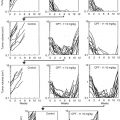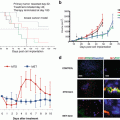© Springer International Publishing AG 2017
Robert M. Hoffman (ed.)Patient-Derived Mouse Models of Cancer Molecular and Translational Medicinehttps://doi.org/10.1007/978-3-319-57424-0_2121. Afterward: The Future of Patient-Derived Models of Cancer
(1)
AntiCancer, Inc., 7917 Ostrow Street, San Diego, CA 92111, USA
(2)
Department of Surgery, University of California, San Diego, CA, USA
Keywords
Patient tumorsOrthotopicMetastasis Nude miceNSG miceNOG miceHumanizedChemotherapyCirculating tumor cellsUse of Patient-Derived Mouse Models for Individualized Precision Therapy
Metastatic cancer is almost as deadly as it was a half century ago. Although, there are many more FDA-approved cancer drugs than before, and the medical oncologist is presented with a much wider choice of therapy for each patient.
Most teaching hospitals and other large hospitals have a “tumor board” meeting of cancer doctors of the particular hospital, as well as guest doctors. Usually the meetings are weekly and the status of many different cancer patients are presented with advanced disease, along with various radiological scans and other data. A pathologist may present the tumor’s histological information. The surgeon may present findings at surgery, and the medical oncologist may present the prior treatment if any and an opinion of the current treatment plan. At this point, doctors in the audience also present their ideas for treatment, as well as ask questions among the presenting doctors. The treatment plans offered by the medical oncologist in charge and doctors in the audience may vary greatly. Watching such a spectacle is frustrating and disheartening and evokes great sympathy for the poor patient. After these brief discussions, the next patient is brought up and the above cycle is repeated.
The patient-derived mouse models described in the present volume offer a solution to this seemingly intractable problem of effective treatment of metastatic cancer. Various attempts have been made to use the patient-derived models to design individual therapy. However, most models currently offered to patients have their tumors sub-cutaneously transplanted in immuno-deficient mice, which rarely metastasize. In contrast, orthotopic-transplant patient-derived models, termed patient-derived orthotopic xenografts (PDOX), usually metastasize as in the patient [1]. In addition, the drug response pattern of the tumor can vary significantly in the same tumor depending on whether the tumor is growing sub-cutaneously or orthotopically. In addition, the same mouse’s primary and orthotopic tumors can have a different drug response pattern (see Chap. 20 in the present volume).
There are important issues for patient-derived mouse models to be useful for individualized therapy:
Gastrointestinal tumors, sarcomas, melanoma, glioblastomas, and some lung cancer types have a greater chance for establishment in mouse models. Higher-stage and higher-grade tumors also establish more readily in mouse models. X-ray treatment decreases the tumor’s chance for establishment in mice. Drugs should be tested at doses that could be achieved in the patient (Please see Chap. 9 in the present volume).
In the early days of patient-derived models, chemotherapy response on human patent cancer xenografts in nude mice was directly compared with clinical response to the same chemotherapy in the patients. Single-drug treatment of an investigational agent resulted in inhibition of tumor growth in the xenograft model and to the donor patient. Chemotherapy in three other xenografts produced no significant response, which corresponds to the clinical response to other donor patients [2].
Fiebig (Chap. 3 in the present volume) and Houghton (Chap. 11 in the present volume) also found good correlations between patient mouse models and the patient. The drug response of patient breast cancer was concordant with that of the patient’s in five of seven analyzable cases. The panel of breast cancer xenografts included mostly triple-negative but also ER positive and ERBB2 positive [3].
A correlation between the patient-derived mouse models and clinical outcome was observed in 13 of 16 (81%) of sarcoma patients [4].
Non-small-cell lung carcinoma (NSCLC) patient tumors were implanted into nonobese diabetic severe combined immune-deficient (NOD-SCID) mice and treated with epidermal growth factor receptor (EGFR) tyrosine kinase inhibitors (TKIs). The patient models had variable sensitivity to first- and second-generation EGFR TKIs and the monoclonal antibody cetuximab. All EGFR-mutant NSCLC patient models studied recapitulated their corresponding patient tumor phenotype and clinical course, including response pattern to EGFR TKIs [5].
A tumor from a patient with advanced, gemcitabine-resistant, pancreatic cancer was established in immunodeficient mice. Mitomycin C, identified on the basis of its efficacy in the patient’s xenograft models, resulted in a more than 3-year tumor response [6].
These studies, although they have taken place over approximately 40 years, are just a beginning of the use of patient-derived xenografts for individualized precision cancer therapy. Perhaps the biggest obstacle for their further development and use to improve treatment outcome is the attitude of the treating physician.
“Humanized” Patient-Derived Mouse Models
Current “humanized” mouse models are based on severe combined immunodeficient (SCID) mice with mutations in the interleukin-2 receptor common γ-chain locus. This mutation leads to highly deficient T, B, and NK cells in the mice. These engineered mouse strains support the engraftment of functional human immune cells [7].
A nonobese diabetic SCID (NOD/SCID) mouse line with a complete null mutation of the interleukin-2 receptor immune γ chain (NOD/SCID/interleukin 2 receptor [IL2r] γ(null) (NSG mice) enabled development of functional human hemato-lymphopoiesis. Purified human CD34+ or hCD34+ hCD38− cord blood cells were transplanted into NOD/SCID/IL2r γ(null) newborn mice. Functional hematopoietic cells were reconstituted in 70% of the animals [8]. NOD/SCID mice with a mutation in the IL-2 receptor that lack the intra-cytoplasmic chain were also developed (NOG mice) [7].
Stay updated, free articles. Join our Telegram channel

Full access? Get Clinical Tree





